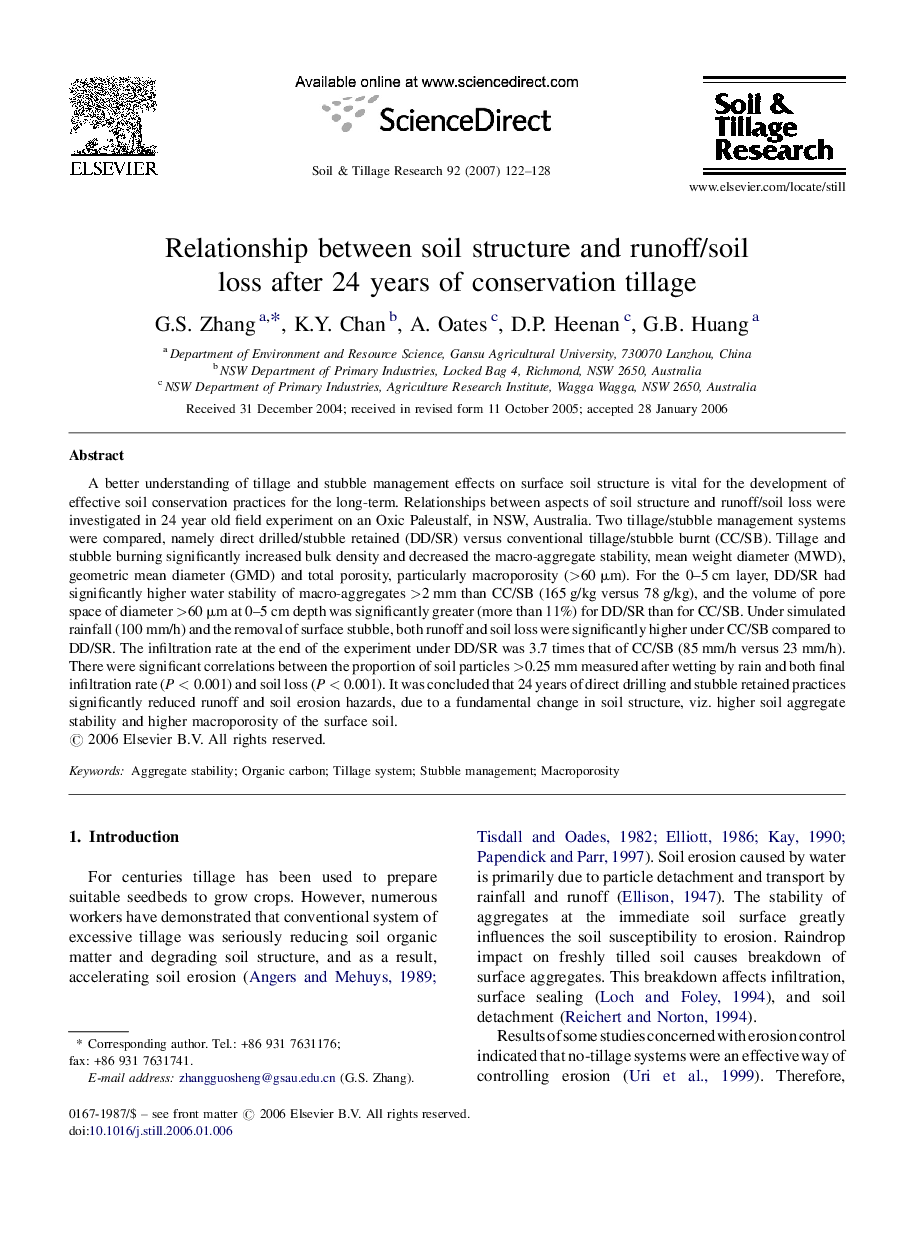| Article ID | Journal | Published Year | Pages | File Type |
|---|---|---|---|---|
| 306783 | Soil and Tillage Research | 2007 | 7 Pages |
A better understanding of tillage and stubble management effects on surface soil structure is vital for the development of effective soil conservation practices for the long-term. Relationships between aspects of soil structure and runoff/soil loss were investigated in 24 year old field experiment on an Oxic Paleustalf, in NSW, Australia. Two tillage/stubble management systems were compared, namely direct drilled/stubble retained (DD/SR) versus conventional tillage/stubble burnt (CC/SB). Tillage and stubble burning significantly increased bulk density and decreased the macro-aggregate stability, mean weight diameter (MWD), geometric mean diameter (GMD) and total porosity, particularly macroporosity (>60 μm). For the 0–5 cm layer, DD/SR had significantly higher water stability of macro-aggregates >2 mm than CC/SB (165 g/kg versus 78 g/kg), and the volume of pore space of diameter >60 μm at 0–5 cm depth was significantly greater (more than 11%) for DD/SR than for CC/SB. Under simulated rainfall (100 mm/h) and the removal of surface stubble, both runoff and soil loss were significantly higher under CC/SB compared to DD/SR. The infiltration rate at the end of the experiment under DD/SR was 3.7 times that of CC/SB (85 mm/h versus 23 mm/h). There were significant correlations between the proportion of soil particles >0.25 mm measured after wetting by rain and both final infiltration rate (P < 0.001) and soil loss (P < 0.001). It was concluded that 24 years of direct drilling and stubble retained practices significantly reduced runoff and soil erosion hazards, due to a fundamental change in soil structure, viz. higher soil aggregate stability and higher macroporosity of the surface soil.
